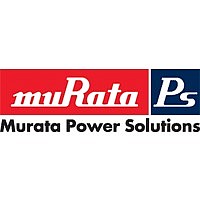LLL153C80J224ME14E Murata Electronics North America, LLL153C80J224ME14E Datasheet - Page 214

LLL153C80J224ME14E
Manufacturer Part Number
LLL153C80J224ME14E
Description
CAP CER
Manufacturer
Murata Electronics North America
Series
LLLr
Datasheet
1.GNM1M2R71C104MA03D.pdf
(220 pages)
Specifications of LLL153C80J224ME14E
Capacitance
0.22µF
Voltage - Rated
6.3V
Tolerance
±20%
Temperature Coefficient
X6S
Mounting Type
Surface Mount, MLCC
Operating Temperature
-55°C ~ 105°C
Applications
Bypass, Decoupling
Ratings
-
Package / Case
-
Size / Dimension
-
Height
-
Thickness
-
Lead Spacing
-
Features
Low ESL (Reverse Geometry)
Lead Style
-
Lead Free Status / Rohs Status
Lead free / RoHS Compliant
Other names
LLL153C80J224ME14L
LLL153C80J224ME14L
LLL153C80J224ME14L
Available stocks
Company
Part Number
Manufacturer
Quantity
Price
Company:
Part Number:
LLL153C80J224ME14E
Manufacturer:
MURATA
Quantity:
640 000
- Current page: 214 of 220
- Download datasheet (4Mb)
18
!Note
• This PDF catalog is downloaded from the website of Murata Manufacturing co., ltd. Therefore, it’s specifications are subject to change or our products in it may be discontinued without advance notice. Please check with our
• This PDF catalog has only typical specifications because there is no space for detailed specifications. Therefore, please approve our product specifications or transact the approval sheet for product specifications before ordering.
sales representatives or product engineers before ordering.
!Note
5. Flow Soldering
Table 2
Recommended Conditions
212
!Caution
Pb-Sn Solder: Sn-37Pb
Lead Free Solder: Sn-3.0Ag-0.5Cu
Optimum Solder Amount for Flow Soldering
Peak Temperature
When sudden heat is given to the components, the
mechanical strength of the components should go down
because remarkable temperature change causes
deformity of components inside. And an excessively long
soldering time or high soldering temperature results in
leaching by the outer electrodes, causing poor adhesion
or a reduction in capacitance value due to loss of contact
between electrodes and end termination.
In order to prevent mechanical damage in the
components, preheating should be required for both of
the components and the PCB board. Preheating
conditions are shown in Table 2. It is required to keep
temperature differential between the soldering and the
components surface ( T) as small as possible.
When components are immersed in solvent after
mounting, be sure to maintain the temperature difference
between the component and solvent within the range
shown in Table 2.
Do not apply flow soldering to chips not listed in Table 2.
The top of the solder fillet should be lower than the
thickness of components. If the solder amount is
excessively big, the risk of cracking is higher during
board bending or under any other stressful conditions.
Continued from the preceding page.
• Please read rating and !CAUTION (for storage, operating, rating, soldering, mounting and handling) in this catalog to prevent smoking and/or burning, etc.
• This catalog has only typical specifications because there is no space for detailed specifications. Therefore, please approve our product specifications or transact the approval sheet for product specifications before ordering.
Atmosphere
G--18/21/31
Part Number
Pb-Sn Solder
240-250 C
Air
Temperature Differential
TV150D
Lead Free Solder
250-260 C
N
2
[Standard Conditions for Flow Soldering]
[Allowable Soldering Temperature and Time]
Peak Temperature
Temperature (D)
In case of repeated soldering, the accumulated
soldering time must be within the range shown above.
270
260
250
240
230
170 C
150 C
130 C
0
Adhesive
T
10
60-120 seconds
Preheating
20
Continued on the following page.
Soldering
5 seconds max.
Soldering Time (sec.)
30
Up to Chip Thickness
Gradual
Cooling
Time
in section
C02E.pdf
09.9.18
Related parts for LLL153C80J224ME14E
Image
Part Number
Description
Manufacturer
Datasheet
Request
R

Part Number:
Description:
BUZZER PIEZO 25VP-P SMD
Manufacturer:
Murata Electronics North America

Part Number:
Description:
CAP 4-ARRAY 680PF 100V X7R 1206
Manufacturer:
Murata Electronics North America
Datasheet:

Part Number:
Description:
CAP 4-ARRAY 1000PF 100V X7R 1206
Manufacturer:
Murata Electronics North America
Datasheet:

Part Number:
Description:
CAP 4-ARRAY 1800PF 100V X7R 1206
Manufacturer:
Murata Electronics North America
Datasheet:

Part Number:
Description:
CAP 4-ARRAY 68000PF 16V X7R 1206
Manufacturer:
Murata Electronics North America
Datasheet:

Part Number:
Description:
CAP CER 1000PF 50V 10% X7R 0402
Manufacturer:
Murata Electronics North America
Datasheet:

Part Number:
Description:
CAP CER 10000PF 16V 10% X7R 0402
Manufacturer:
Murata Electronics North America
Datasheet:

Part Number:
Description:
CAP 5.5-25PF 2.5X3.2MM SMD
Manufacturer:
Murata Electronics North America
Datasheet:

Part Number:
Description:
CAP 4.5-20PF 2.5X3.2MM SMD
Manufacturer:
Murata Electronics North America
Datasheet:

Part Number:
Description:
CAP 5.0-20PF 3.2X4.5MM SMD RED
Manufacturer:
Murata Electronics North America
Datasheet:

Part Number:
Description:
CAP 2.0-6.0PF 3.2X4.5MM SMD BLU
Manufacturer:
Murata Electronics North America
Datasheet:

Part Number:
Description:
CAP 1.4-3.0PF 3.2X4.5MM SMD BRN
Manufacturer:
Murata Electronics North America
Datasheet:

Part Number:
Description:
CAP 3.0-10PF 3.2X4.5MM SMD WHT
Manufacturer:
Murata Electronics North America
Datasheet:

Part Number:
Description:
CAP 2.0-6.0PF 4X4.5MM TOPADJ BLU
Manufacturer:
Murata Electronics North America
Datasheet:

Part Number:
Description:
CAP 8.5-40PF 4X4.5MM TOPADJ YEL
Manufacturer:
Murata Electronics North America
Datasheet:











